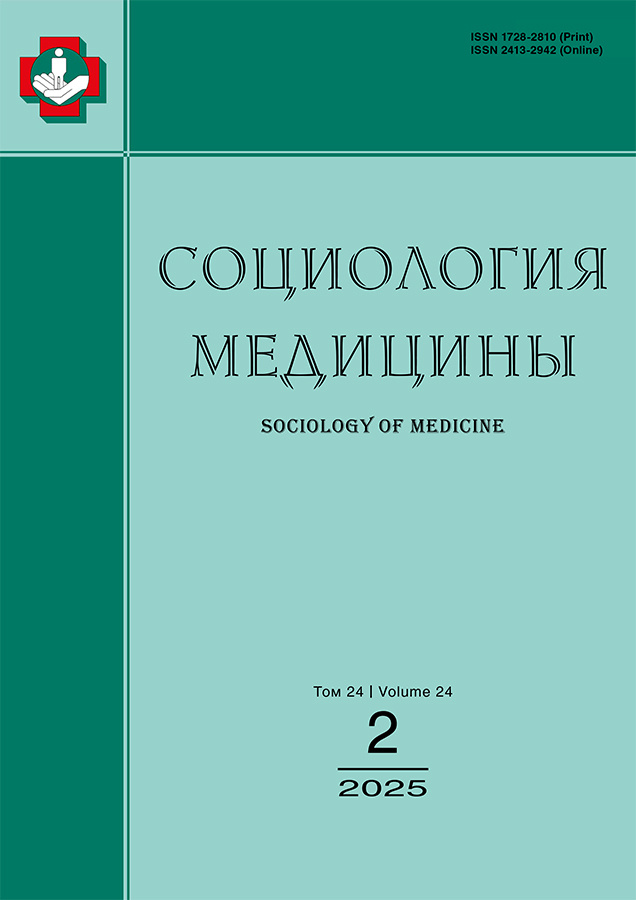Statistical analysis of the balance level of food provision for the population of Russia
- Authors: Sokolov A.P.1, Sadykova A.I.2
-
Affiliations:
- The First Sechenov Moscow State Medical University
- State University of Education
- Issue: Vol 24, No 2 (2025)
- Pages: 142-150
- Section: HEALTH ECONOMICS
- URL: https://rjsocmed.com/1728-2810/article/view/643225
- DOI: https://doi.org/10.17816/socm643225
- EDN: https://elibrary.ru/OSGTBL
- ID: 643225
Cite item
Abstract
This article analyzes the structure of food consumption by the population of Russia. Adequate and balanced nutrition is the foundation of a long and healthy life, which makes food provision in sufficient quantities particularly important at present, when one of the goals of Russia’s socio-economic development is to increase average life expectancy to 80 years by 2030. Particular attention should also be paid to the economic accessibility of food, which is directly related to household income levels. The rise in prices of common food products is driven by high inflation. At the same time, significant income disparities result in corresponding disparities in consumption levels. Populations with lower incomes tend to purchase lower-priced products, which often leads to a decline in food quality and nutritional value. Another important aspect is adherence to recommendations for a balanced daily diet, which directly affects both quality of life and life expectancy. The analysis showed that higher income levels are associated with increased consumption of animal products, fish, vegetables, fruits, and berries. At the same time, the diets of all population groups studied were found to be unbalanced.
Full Text
About the authors
Alexey P. Sokolov
The First Sechenov Moscow State Medical University
Author for correspondence.
Email: sokolov_a_p@staff.sechenov.ru
ORCID iD: 0000-0001-6961-8632
SPIN-code: 8417-3464
Dr. Sci. (Economics), Professor
Russian Federation, MoscowAigul I. Sadykova
State University of Education
Email: aigul-211159@mail.ru
ORCID iD: 0000-0003-2807-9577
SPIN-code: 3918-1976
Cand. Sci. (Economics)
Russian Federation, MoscowReferences
- Kazumova AB. The relationship between a healthy lifestyle and mental health indicators. In: Healthy lifestyle and sports pharmacology: collection of scientific papers based on the materials of the All-Russian scientific and practical conference with international participation dedicated to World Health Day (Kursk, April 9, 2024). Kursk: Kursk State Medical University; 2024. P. 126–128. ISBN: 978-5-7487-3173-7 EDN: SYFWZN
- Kurmanova LR, Kurmanova DA, Sadykova AI. Threats to food security and ways to minimize them in modern conditions. Economics and management: research and practice journal. 2023;(5(173)):25–31. doi: 10.34773/EU.2023.5.5 EDN: NUMIDU
- Sokolov AP, Sadykova AI, Isakov AS. Problems of effective satisfaction of needs in the context of ensuring economic security. Innovative economy: information, analytics, forecasts. 2022;(3):32–38. doi: 10.47576/2411-9520_2022_3_32 EDN: VMVUKX
- Reshetnikov AV, Prisyajnaya NV, Reshetnikov VA, Efimov IA. The features of healthy life-style perception by students of medical universities. Problems of social hygiene, public health and history of medicine. 2018;26(4):201–206. doi: 10.32687/0869-866X-2018-26-201-206 EDN: YOVEKT
- FAO, IFAD, WFP. Monitoring food security and nutrition in support of the 2030 agenda for sustainable development: taking stock and looking ahead. Rome: FAO; 2016. p. 24. (In Russ.) ISBN: 978-92-5-409432-4
- Anishchenko AN, Usmanov DI. Changes in the nutritional structure of the population of the Russian regions as a threat to food security. Creative economy. 2023;17(11):4291–4308. doi: 10.18334/ce.17.11.119652 EDN: TKOEUE
- Tutelyan VA, Nikityuk DB. Key challenges in the dietary intake structure and cutting edge technologies for optimizing nutrition to protect the health of the Russian рopulation. Problems of nutrition. 2024;93(1(551)):6–21. doi: 10.33029/0042-8833-2024-93-1-6-21 EDN: XCDQZJ
Supplementary files









